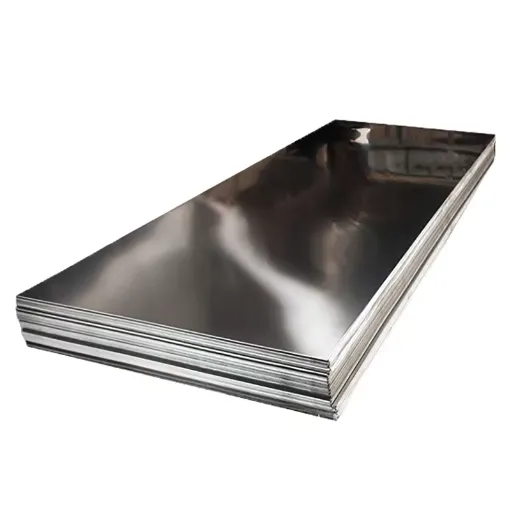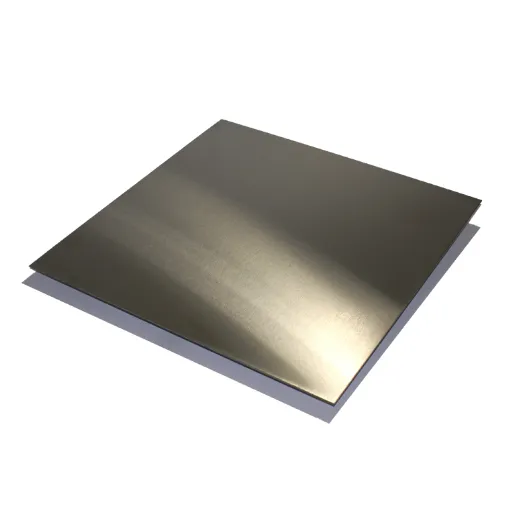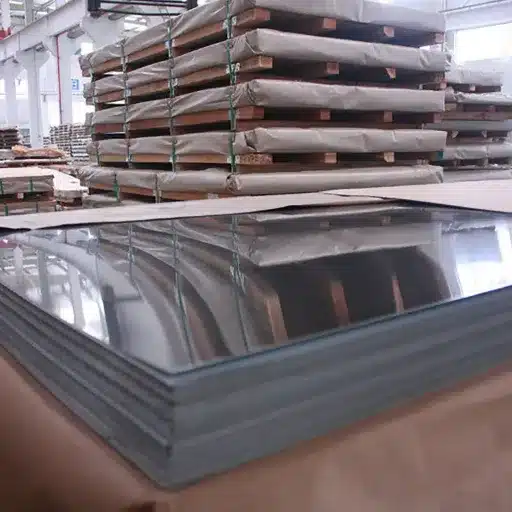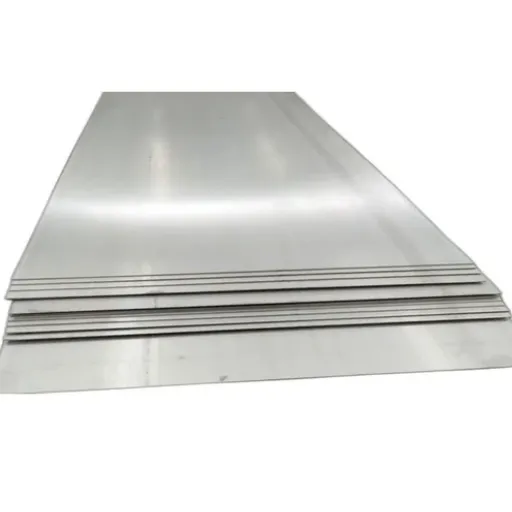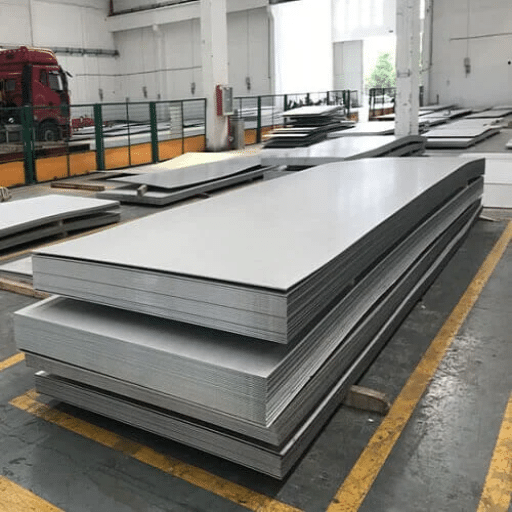In any piping industry choice for industrial, commercial, or residential use, knowing the specifications and size is essential for an efficient build, safety at work, and longevity of the piping system. Due to their versatility and reliable strength, Schedule 40 pipes are significant in numerous applications. This blog takes a deep dive into Schedule 40 pipe dimensions, standards, and applications, addressing all the key considerations you will face when selecting the correct pipes. This guide will provide the technical understanding that every contractor, engineer, or DIY enthusiast needs to feel comfortable navigating the Schedule 40 pipe realm. From wall thickness to diameter sizing, we examine how various specifications impact function and compatibility in real-world applications.
Introduction to Schedule 40 Pipes
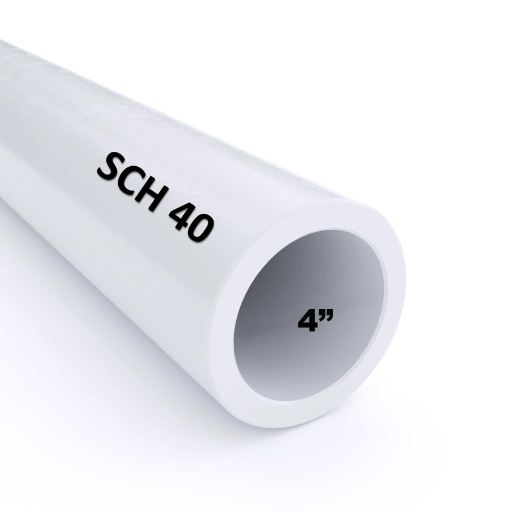
Schedule 40 pipes stand among the most common types of pipes, dominating use due to versatility and balance of strength against cost. They are distinguished on the basis of wall thickness, which is related to pressure-bearing ability and overall life span. These are widely accepted amongst fitting types, such as PVC, steel, or stainless steel; hence, they are widely used in plumbing, irrigation, and construction for ease of installation. The “Schedule 40” specification comes under the nationwide Pipe Program of the American National Standards Institute, which standardizes dimensions for varying usages.
Definition and Purpose of Schedule 40 Pipes
Schedule 40 pipes have a wall thickness corresponding to the nominal pipe size (NPS) and pressure-carrying capacity. Their definition assures structural integrity and dependable performance under given operating pressures. Used in both residential and industrial sectors, Schedule 40 pipes are very versatile and find usage in systems carrying water, air, and non-corrosive chemicals. In their design, they conform to rigid industry standards, which makes Schedule 40 pipes compatible with a variety of pipe fittings, including threaded connections and solvent-welded joints.
In principle, Schedule 40 pipes represent an effective balance of cost and strength to cater for fluid transport and gas applications. These pipes are designed to withstand medium levels of internal and external pressures, processes like municipal water supply, and agricultural irrigation being among the best examples. The other kind of arguments in favor of the wide use of Schedule 40 pipes include their easy availability, economical standard dimensions, and well-accepted piping standards such as ASTM and ANSI, which have laid down the criteria for Schedule 40. Uniform standardization of Schedule 40 pipes for PVC, steel, and stainless steel promotes reliability and ease of maintenance, and hence ensures long-term operational efficiency in various environments.
Overview of Common Materials
The materials used in making Schedule 40 pipe are chosen to match the very rigorous specifications of industrial and commercial applications and should offer sufficient durability and functionality. Polyvinyl chloride, being light in weight with chemical resistance and cost considerations, has established itself as one of the most widely used materials for plumbing, irrigation, and drainage systems.
Considering the need for temperature resistance and strength capable of handling harsh conditions within the process industry, carbon steel is most commonly used. Its moderately high tensile strength sustains harsh working conditions concerning high pressures and high temperatures of oil, gas, and miscellaneous strategic fluids. Other widely used steel provides stainless corrosion resistance and sanitary attributes essential in food processing, pharmaceutical, and water treatment systems.
Materials based upon flexible polymers, such as chlorinated polyvinyl chloride (CPVC), have also grown into prominence due to their abilities to tolerate hot water and aggressive chemical environments. The advent of several composite materials, such as fiberglass-reinforced plastic (FRP), offers strength with reduced weight, making these solutions highly suitable for specialized applications in chemical processing industries.
Each material class holds a pool of pros and cons to be determined by variables like pressure, temperature, chemical exposure, and arranged lifespan. Such innovations in materials ensure that Schedule 40 pipes serve a very dynamic purpose in the gamut of operational contexts while still being reliable when it comes to performance.
Standard Dimensions of Schedule 40 Pipes
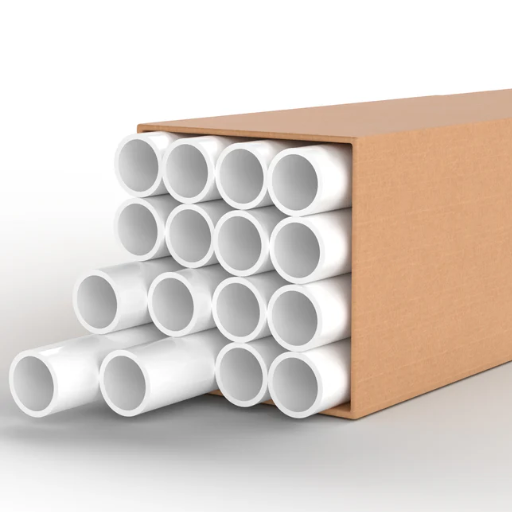
- 1/2-inch NPS
Outer Diameter (OD): 0.840 inches
Wall Thickness: 0.109 inches
- 1-inch NPS
Outer Diameter (OD): 1.315 inches
Wall Thickness: 0.133 inches
- 2-inch NPS
Outer Diameter (OD): 2.375 inches
Wall Thickness: 0.154 inches
- 4-inch NPS
Outer Diameter (OD): 4.500 inches
Wall Thickness: 0.237 inches
The dimensions stated above must be ensured for piping systems’ compatibility and performance standards among various industries. Specifications are best seen in industry standards such as ASME B36.10M.
Nominal Pipe Sizes and Wall Thickness
In different uses, it is significant to acknowledge pipe nominal size (NPS) and wall thickness as factors to maintain structural integrity and appropriate flow. The wall thickness, which directly affects the pipe’s ability to withstand a certain pressure, is classified in schedules used as standard references for pipe wall thickness, such as Schedule 40 and Schedule 80. For instance, thick-wall pipes are better suited to operate under higher pressure and lower flow rates because of the reduction in inner diameter.
Nominal pipe size dimensions are standardized to ensure compatibility and reliability for different systems and industries. For a 6-inch NPS pipe, the nominal pipe diameter is about 6.625 inches, whereas the wall thickness can vary with respect to the applications and schedules involved. The wall thickness for 6 6-inch NPS pipe is about 0.280 inches according to Schedule 40 standards, whereas it is in the range of 0.432 inches for Schedule 80, thus allowing for a more elevated pressure tolerance.
There are also some interpretations about the analysis of these standard parameters for chemical processing, oil and gas transmission, and construction. ASME standards ensure the relevance, safety, and performance of industrial piping systems in different processes.
Weight Specifications for Schedule 40 Steel Pipe
The weight of Schedule 40 steel pipe is an important property that directly affects its application in the engineering field, which includes uses for structural support, fluid transportation systems, and mechanical assemblies. It is thus calculated from and actually dependent on the dimensions of the pipe, namely nominal size, wall thickness, and length. For instance, a steel pipe of nominal size 1 inch of Schedule 40 weighs about 1.68 pounds per foot. Whereas, a pipe of 3-inch size with the same schedule weighs somewhat less than 7.58 pounds per foot. These weight specifications are given by strict formulas based on densities (7850 kg/m³ for carbon steel) as well as the pipe’s geometry. This becomes quite important for load calculations, system design, and transportation planning. Such standardized information assists engineers and other professionals to make the right estimation that complies with the requirements of the project and helps in the optimum utilization of resources in the industries.
Comparison with Other Pipe Schedules
|
Pipe Schedule |
Wall Thickness (inches) |
Pressure Tolerance |
Common Applications |
Weight (per unit length) |
|---|---|---|---|---|
|
Schedule 10 |
0.134 |
Low |
Light-duty applications |
Lowest |
|
Schedule 20 |
0.188 |
Moderate |
Plumbing, low-pressure systems |
Low |
|
Schedule 40 |
0.237 |
Standard |
General industrial use |
Moderate |
|
Schedule 80 |
0.432 |
High |
High-pressure systems, chemical plants |
High |
|
Schedule 120 |
0.500+ |
Very high |
Critical operations, extreme pressures |
Very High |
|
Schedule 160 |
0.625+ |
Maximum |
Specialized heavy-industrial uses |
Heaviest |
Applications of Schedule 40 Pipes

- Plumbing Systems
- Usage: Schedule 40 pipe is very popular in residential and commercial plumbing systems, as the pipes provide enough strength to support standard water pressure and flow requirements.
- Advantages: Corrosion resistance, very easy to install, and has a long service life.
- Irrigation Systems
- Usage: It is often employed in irrigation schemes for agriculture and landscaping, whereby water is applied to crops and plants.
- Advantages: Cheap, lightweight, and adaptable to a number of ways to join together.
- Construction Frameworks
- Usage: Dependable for Scaffolding, Temporary Framework, and Bracing Components.
- Advantages: Fair strength and bearing capacity allow for firm, yet flexible, designs.
- HVAC Systems
- Usage: Typical for heating, ventilation, and air conditioning systems for the movement of fluids required for thermal regulation.
- Advantages: Speciality in wide-range temperature variations and insulation application for energy efficiency.
- Industrial Low-Pressure Applications
- Usage: Associated with industrial expressions of low-pressure steam, air, or transport of non-corrosive chemicals.
- Advantages: Moderate pressures and temperatures can be absorbed and yet deliver system reliability.
Use in Plumbing and Construction
They are basically pipes and fittings used in plumbing and construction systems to ensure installation and disposal of water, gases, and other fluids. Nowadays, piping and fitting for plumbing structures may include PVC (polyvinyl chloride), PEX (cross-linked polyethylene), and copper, depending on the materials that will suitably serve the particular condition of any environment. For example, PVC is preferred for corrosion resistance and cost-efficiency in most residential applications; PEX is an extremely flexible tubing that is fast and easy to install, thus cutting down installation labor time considerably. Copper remains the preferred material in places where it will be subjected to high temperatures, such as hot water systems, because it is durable.
From the construction point of view, the invention of new piping materials enabled the erection of lightweight systems for improved efficiency in installation and serviceability over time. Through the use of advanced methods, pipes can be engineered to be highly resistant to leakage and well-controlled with pressure so as to comply with building codes and standards, among other specifications. Furthermore, prefabricated plumbing assemblies are becoming more and more prevalent, with grand savings in construction time and costs being realized on large projects. This attests to the strategic intersection of engineering accuracy and material science in modern plumbing and construction.
Manufacturing and Industrial Applications
- Chemical Processing Facilities
- More elaborate piping arrangements tolerant of extreme temperatures and corrosive materials allow a chemical plant to safely carry acids, solvents, and gases.
- Data Example: Polypropylene (PP) piping systems have seen a 35% uptake over the last five years due to their strength and chemical resistance.
- Food and Beverage Manufacturing
- Stainless steel pipes provide the standard requirements for good hygienic conditions; they prevent contamination and can undergo cleaning applied at high pressures.
- Data Example: There has been a 20% global growth in the adoption of 316-grade stainless steel for food-grade systems since 2020, mainly due to tighter safety regulations.
- Oil and Gas Refineries
- Crude oil, natural gas, and refining by-products are transported through reinforced carbon steel or thermoplastic pipelines at high pressures and temperatures.
- Data Example: Reinforced thermoplastic pipeline, owing to its durability and low maintenance cost, is projected to have an increased market growth of 6.8% CAGR during the forecast period from 2021 to 2026, as per the report.
- Pharmaceutical Production
- Piping systems for ultra-purified water (UPW) and sterile gas delivery are adapted to the stringent pharmaceutical manufacturing protocols.
- Data Example: Around 70% of pharmaceutical plants have shifted to modular piping systems aimed at reducing downtime and ensuring the conformity of FDA Guidelines.
- HVAC Systems in Industrial Buildings
- Piping related to the HVAC system of large manufacturing operations is required to exhibit better thermal conductivity and corrosion resistance. Copper tubing and cross-linked polyethylene (PEX)are commonly used.
- Data Example: Copper-based piping in HVAC systems offers a performance improvement of 15%-20% against traditional materials like steel.
Understanding Schedule 40 vs. Schedule 80
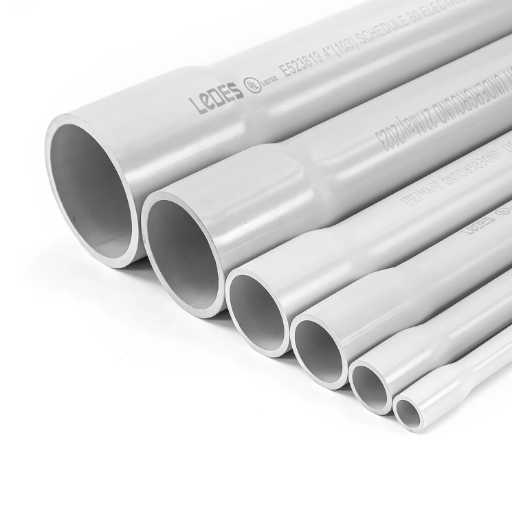
Schedule 40 and Schedule 80 are classifications of pipe depending on their wall thickness and also on the pressure they can withstand.
- Wall Thickness
- Schedule 80 pipes have thicker walls than Schedule 40 pipes of the same diameter. This increased thickness allows Schedule 80 pipes to handle higher pressure.
- For example, according to its nominal wall thickness, a Schedule 40 1-inch pipe actually measures 0.133 inches in thickness; a 1-inch Schedule 80 pipe measures 0.179 inches in thickness.
- Pressure Ratings
- Schedule 80 pipes resist a greater internal pressure than Schedule 40 pipes due to the extra wall thickness; this condition makes them preferable for higher internal pressure situations such as industrial systems or high-demand pumping operations.
- Applications
- Schedule 40 is more of the usual kind used at a residential level and light-industrial level for water delivery and low-pressure fluid systems.
- Schedule 80, on the other hand, would see more of the heavy-duty use environment where process respectability and demanding to handle are involved, such as in chemical handling or high-pressure water systems.
Differences in Pressure Tolerance
Pressure tolerance is a very important criterion in deciding the suitability of the pipeline for certain applications. Schedule 40 pipes have a lower pressure rating due to thinner pipe walls and are generally sufficient for low-to-moderate pressure processes. For example, a 1-inch diameter Schedule 40 pipe may enjoy a rating of about 450 psi at room temperature (73°F). However, they are prone to lose this rating as the working environment heats up or just becomes more demanding.
Instead, Schedule 80 pipes, which contain thicker walls, can resist greater pressure. For a 1-inch diameter pipe, Schedule 80 PVC can have a pressure rating on the order of 630 psi at 73°F. With this denser construction, it is well-suited for systems operating under high pressure, such as the industrial transfer of chemicals or very efficient hydraulic applications. Nonetheless, please carefully note the factor that pressure ratings depend heavily on the material, diameter, and operating temperature. Hence, during pipe choice, the variables must be weighed toward system integrity and efficiency.
Suitability for Different Projects
In weighing the suitability of Schedule 40 versus Schedule 80 pipes for any application, consideration must be given to pressure tolerances, chemical exposure, and practicality in terms of cost. The thinner Schedule 40 pipes are mostly best for residential installations, including irrigation systems, plumbing systems, and low-pressure water supply applications. The price of Schedule 40 pipes is kept low, and they offer sufficient working capabilities, hence becoming the common choice for lighter applications.
Schedule 80 pipes, conversely, are intended for relatively high-pressure environments demanding a certain professional appeal. The increase in wall thickness enables them to stand against wear and tear, thus making them ideal for industrial usage in chemical manufacturing plants and systems dealing with highly corrosive or hazardous substances. Besides that, industries involved in oil and gas, in wastewater treatment, and in power generation often find the enhanced safety and reliability under extremely high pressures and temperatures afforded by Schedule 80 piping attractive.
Visual Comparisons and Charts
Since pipe schedules vary structurally and in performance, visual tools such as comparative charts and diagrams act as an excellent means to depict these variations. Below is a bar chart that puts wall thickness and pressure ratings of Schedule 40 and Schedule 80 pipes into perspective for several diameters to inform their uses and limitations.
For example, a Schedule 80, 6-inch-diameter pipe has considerably thicker walls (0.432 inches) than the Schedule 40 (0.28 inches), permitting a higher pressure rating for industrial applications. Likewise, there are tables showing the maximum allowed working pressures of pipes made from various materials, including steel, PVC, CPVC, etc., which clearly indicate the appropriate pipe for high-pressure or corrosive environments.
Another great visual tool is a color-coded heat map that indicates material compatibility with certain chemicals. This complementary information boosts technical specs clarity so that the decision makers feel comfortable and confident in making precise and confident decisions.
Selecting the Right Schedule 40 Pipe
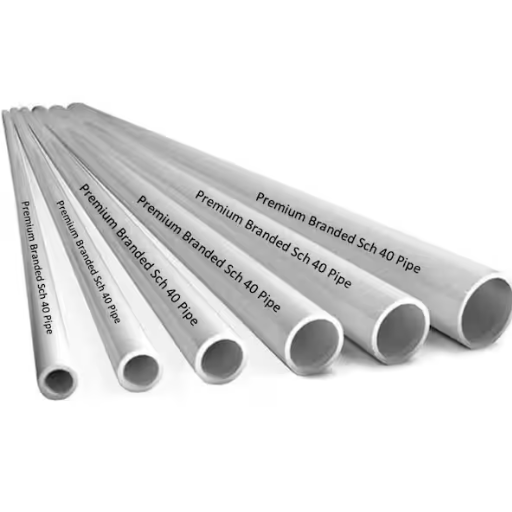
The selection of Schedule 40 pipe promotes consideration of the following three key issues:
- Material Compatibility
Make sure the pipe material, be it PVC, CPVC, or steel, used is compatible with the application itself. For instance, PVC withstands most water-based applications fairly well, while CPVC can withstand higher temperatures and attacks from certain chemicals.
- Pressure and Temperature Ratings
The ratings for pressure and temperature of the pipe must meet or exceed the requirements of the operation. Failure to do so might lead to a system failure, thus unsafe.
- Application Requirements
Go by what’s required from the project; steel for heavy-duty systems, while PVC and CPVC will stand for light-duty, cheap, and corrosion-resistant.
Factors to Consider: Material and Thickness
Getting into piping thickness, or, more technically speaking, whether the walls are by the schedule or gauge, is a relative strength for resisting internal pressures and any paths laid before additional loads. To cite an example, Schedule 40 and Schedule 80 pipes demonstrate their differences in wall thickness, resulting in varying pressure tolerances; hence, piping is crucial in piping systems exposed to high-pressure fluids or gases. Overly thick pipe material compliant with ANSI/ASME B36.10 or B36.19 standards meant incompatibility with its industry standard, thereby leading to differentiation of either over- or under-specifications. Understanding interrelated aspects will help engineers to design a system that is both functionally efficient and structurally fit.
Determining Pressure Requirements
Pressure requirements are enormous in determining the piping materials and the overall system designs. How much internal pressure a pipe can resist depends on four variables: material, wall thickness, diameter, and operating temperature. For example, for some industrial or high-pressure applications, steel pipes have a greater tolerance for pressure levels compared to most non-metallic alternatives. In the same manner, plastic piping systems such as PVC and CPVC are best suited for low to medium pressure environments, primarily because of their resistance to corrosion and capability to internally handle pressure.
An essentially comprehensive approach should start with an assessment of the maximum allowable working pressure (MAWP), accounting for surge pressure, temperature fluctuation, and potential external load. The assessment must map out industry standards such as ASME B31.1 or ASTM guidelines at all times. Use of appropriate safety factors should alleviate any concerns related to overstressed materials. Advanced modeling and system simulations can then be employed to further optimize designs based on specific operational goals while complying with regulatory standards.
Guidelines for Intended Use
Reference Sources
-
Reflection and Transmission Coefficients from Rectangular Notches in Pipes
- Key Findings: This study characterizes the dimensions of axisymmetric notches in Schedule 40 steel pipes with an 80 mm nominal diameter. It explores the reflection and transmission coefficients to understand the impact of notches on pipe integrity.
- Read the study
-
A Method for Quantitative Analysis of Transient Eddy Current Testing
- Key Findings: This paper analyzes the wall thickness of Schedule 40 carbon steel pipes (250 mm diameter, 9.3 mm wall thickness) using transient eddy current testing. It highlights the effectiveness of multi-frequency analysis for detecting variations in pipe dimensions.
- Read the study
Frequently Asked Questions (FAQs)
Q: What is Schedule 40 Pipe Dimensions?
A: Schedule 40 pipe dimensions refer to the standardized sizes and thicknesses of pipes designated as schedule 40. This specification includes details such as the nominal pipe size, inside diameter (ID), outside diameter (OD), and wall thickness. For example, a 2-inch schedule 40 steel pipe typically has an outside diameter of 2.375 inches and a wall thickness of 0.154 inches. These dimensions make schedule 40 pipes suitable for a variety of applications, including water supply and drainage systems. The chart gives a comprehensive overview of these specifications for different pipe sizes.
Q: How to Determine Schedule 40 Steel Pipe Weight?
A: To determine the weight of schedule 40 steel pipe, you can refer to the weight per foot chart that lists the weights for various nominal pipe sizes. For instance, a 1-inch sch 40 steel pipe weighs approximately 1.68 pounds per foot. The weight can vary based on the pipe’s dimensions and manufacturing process, such as whether it is welded or seamless. Additionally, the weight can be influenced by the grade of steel used in production, such as ASTM A53 pipe or ASME SA53 pipe. Knowing the weight is essential for planning transportation and installation.
Q: What Are the Applications of Schedule 40 Pipe?
A: Schedule 40 pipes are widely used across various industries due to their durability and versatility. Common applications include plumbing, gas distribution, and drainage systems. They are also utilized in construction for structural applications and in manufacturing processes that involve bending and flanging. Depending on the environment, schedule 40 pipes can be made from different materials, including black steel and stainless steel, and may be coated with zinc for added corrosion resistance. Understanding the application requirements helps in selecting the appropriate pipe specification.
Q: What is the Wall Thickness of Schedule 40 Steel Pipe?
A: The wall thickness of schedule 40 steel pipe varies depending on the nominal pipe size. For example, a 3-inch schedule 40 pipe has a wall thickness of 0.216 inches, while a 4-inch pipe has a wall thickness of 0.237 inches. This thickness contributes to the pipe’s strength and ability to withstand pressure. It’s important to note that the wall thickness is a crucial factor in determining the pipe’s suitability for specific applications, especially in high-pressure environments. Manufacturers often provide detailed specifications, including wall thickness, to help in the selection process.
Q: How is the Size of Schedule 40 Pipe Measured?
A: The size of schedule 40 pipe is measured using nominal pipe sizes, which represent the approximate internal diameter of the pipe. For example, a 2-inch nominal pipe size has an actual inside diameter that is smaller than 2 inches due to the wall thickness. This means that when selecting pipes for a project, it’s essential to refer to the schedule 40 chart that outlines the inside and outside dimensions for each nominal size. Additionally, understanding the nominal size helps in ensuring compatibility with fittings and other components in plumbing and piping systems.

